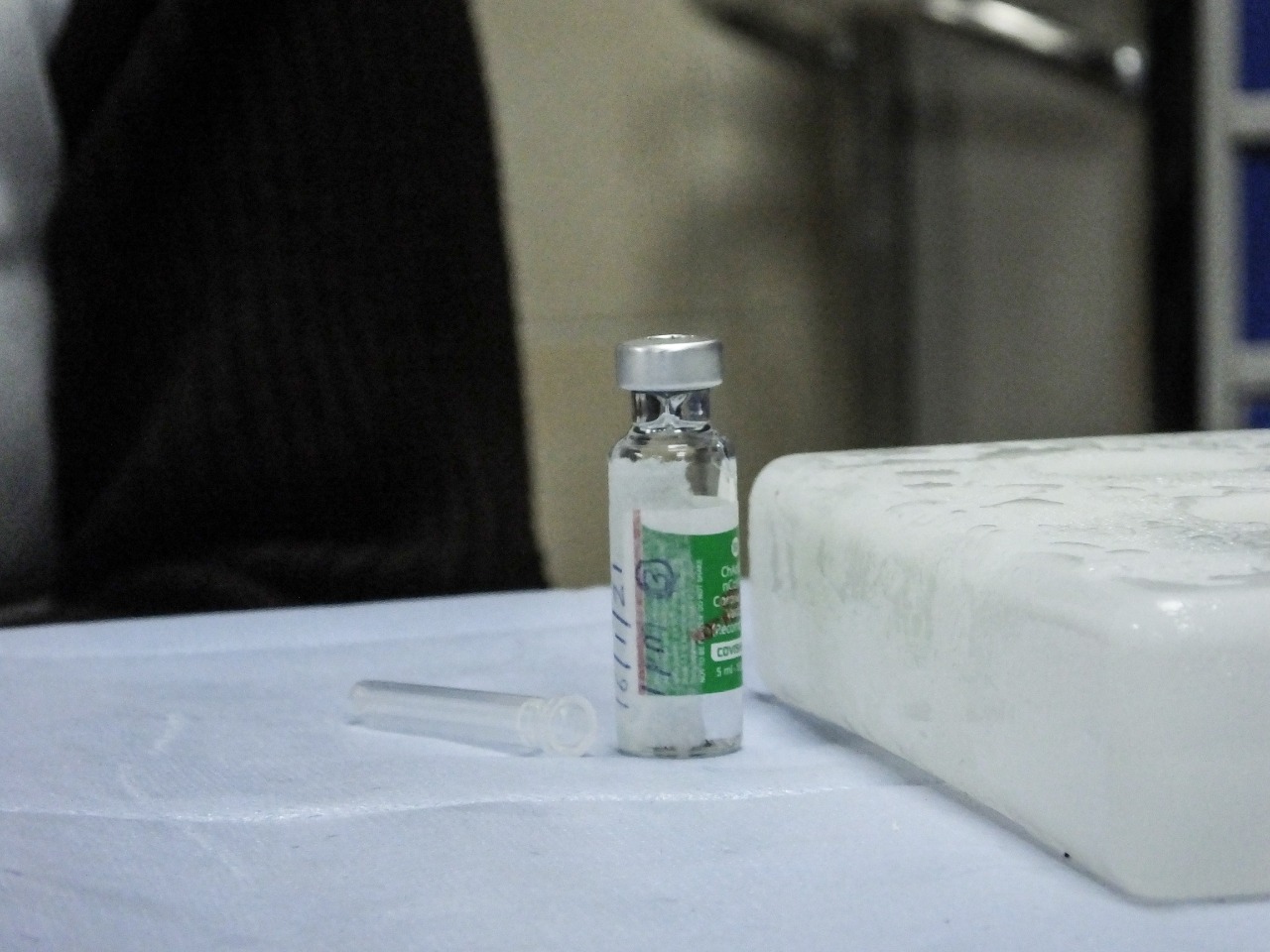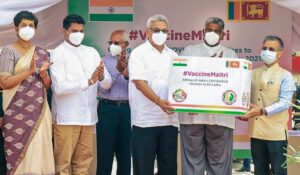Under Modi’s watch, India’s vaccine diplomacy turns into vaccine disaster

While many nations begun vaccinations by late November last year, India began vaccination programme only on January 16, 2021 (MIG Photos/ Aman Kanojiya)
With India’s daily case count rising to a new high every day for about a month, the country has once again displaced Brazil from the slot of the country with the second highest incidence of Covid-19 cases. On Tuesday, India registered over 185,000 cases, a jump of 1582 pc from just about 11,000 cases on March 1 and 200 pc of the previous high of about 97,000 daily cases recorded on September 16, 2020.
Having peaked in September, as the number of cases kept falling, complacency and carelessness crept into the government’s response to the pandemic. By the end of last year, Prime Minister Narendra Modi and his cabinet were thumping themselves on the back for having won the battle against the pandemic and actually began taking credit for the ill-conceived, ridiculously planned, and terribly implemented lockdown that broke the back of the Indian economy, causing a doubling of poverty rates in India, five-decade high unemployment rates and all-round misery.
Low prevalence or detection of new cases as well as a decline in the number of people in hospitals brought in such complacency that India did not take the option of vaccinations seriously, even though the country produces over 60 pc of all vaccines for all illnesses in the world. Pune-based Serum Institute of India, which is the largest vaccine maker in the world, had signed a contract with British pharma giant AstraZeneca for the manufacture of the vaccine developed in collaboration with Oxford University. While by autumn of last year, most of the developed countries had already prebooked over 1.5 billion doses of vaccines that were still under development in the labs, India took its own time to order vaccines. Crucially, while most of the large countries ordered an adequate number of vaccines to cover their entire population at least twice over, India has reportedly ordered only around 170 million doses, even though its own declared target is to fully vaccinate 300 million people by July.
India was much behind other countries in launching mass vaccinations. While many nations had begun vaccinations by late November last year, India began its so-called world’s largest vaccination programme only on January 16, 2021. Over the following few weeks, as vaccination picked up the pace, with a total number of doses administered reaching 4 million a day on some days, there were signs that the country would run out of vaccines sooner than later.

India donated nearly 60 million doses of vaccines to dozens of countries around the world including the neighbouring nations of Bhutan, Nepal, Sri Lanka, Maldives and Bangladesh (PTI Photo)
Adding to pressure on Indian vaccine supply was the donation of nearly 60 million doses of vaccines to dozens of countries around the world including the neighbouring nations of Bhutan, Nepal, Sri Lanka, Maldives and Bangladesh. While this gesture was definitely welcome, especially as most developed countries had cornered vaccines for themselves and were even battling with their closest allies, the Indian government failed to prepare for the needs of its own people.
Over the past few months, even as most experts warned that the pandemic was far from over in India, the government, especially the Prime Minister himself began behaving that India had vanquished the virus. He repeatedly ignored calls by experts as well as his political opponents, notably Congress leader Rahul Gandhi, to prepare for the second wave of the coronavirus. However, practically nothing or very little has been done over the past year to prepare India’s healthcare infrastructure as well as vaccine production and availability to meet a second wave. It has clearly failed to either build new public hospitals or boost the capacity within the existing ones to be able to handle a greater caseload. There has also been little attention paid to the need for oxygen cylinders and drugs like remdesivir that can help in treating patients in serious condition.
Not just in building the infrastructure, the government has also singularly failed to enhance the availability of vaccines. For mysterious reasons, it did not permit the import and use of vaccines made by American giants, Pfizer and Moderna, even though they have been used in huge numbers all over the world and have not reported any significant problems. Even for other vaccines, such as Russian made Sputnik V or Sinovac, it dithered for far too long, fully knowing that there is a significant time lag between allowing the use of vaccines in a country to the placement of orders, be it by government or private bodies, and the shipments to be sent to India or manufactured in India, as the case may be, and finally be available for hospitals to use on patients.
In the best-case scenarios, the gap is at least four months and in the current situation where all producers are behind schedule for delivering their existing orders, it could be an entire year before vaccines from overseas can come. One of the exceptions may be the Sputnik V as Hyderabad-based Dr Reddy’s Laboratory already has an agreement to manufacture it in India and hence it may be the first foreign vaccines to be available in India, but even that could be at least 2-3 months from now.
Instead of preparing the nation and the healthcare sector to be able to handle the second wave, Modi and his entire cabinet has been busy holding large rallies all over the country, especially in the states headed for elections. At none of these political gatherings, did Modi exhort for safety norms like wearing masks or keeping adequate social distancing or even mention the pandemic, except to criticise his opponents. Unmindful of the consequences of the pandemic for the poor and middle classes, the government began to pretend that the pandemic had been driven away. Massive political and spiritual events began to be held. In January, in a surprise move, the government allowed Maha Kumbh, a major Hindu religious event that typically attracts over 100 million devotees over 4 months to proceed at Haridwar in Uttarakhand.
With an 8-round election in West Bengal and 3-round polling in Assam and single rounds in Kerala, Tamil Nadu and Puducherry, massive political rallies, gathering thousands of people without wearing masks and packed together like sardines have been beaming on television screens since the beginning of the year.
Little wonder then that a second wave, much more potent than the first one, has struck different parts of the country. Government’s ill-preparedness became crystal clear within days hospitals were overcrowded, oxygen supplies ran short and drugs like remdesivir disappeared entirely from the open market only to reappear at 10-100 times the price in black market. Though it is a drug to be taken only on prescription and to sold by authorised pharmacies, in Gujarat, the ruling party bought large stocks of it and began distributing it from its offices, forcing hospitals or patients to turn to them!
And of course, the vaccines too began to disappear, leading to several vaccination centres being forced to shut down. When state governments, notably Maharashtra, complained to the Centre about these shortages, instead of supplying more or finally letting go of its illogical monopoly over purchase and supply of vaccines, the central government blamed opposition ruled states like Maharashtra or West Bengal for mismanaging the vaccination programmes.
There have been calls by hundreds of doctors and other health specialists for the government to fully open up the vaccine supply chain, but to no avail. When images of shut down centres, people dying outside hospitals or fighting over oxygen began flooding the media, instead of changing the strategy Modi did what he does the best. He came up with another slogan. Ironically, this was called ‘Tika Utsav’ or Vaccination Festival asking people to come to get vaccinated, mounted at a time vaccine supply had run dry across the nation and people were battling to get hold of vaccines.
With record-high new cases as well as a huge spike in deaths occurring daily, India has already paid a very high price for the completely careless and complacent attitude of an entirely incompetent leader and his team. As he is not the one to accept any mistakes, India’s best hope is that even if Modi keeps on attacking the opposition, he will at least do precisely what the experts and some of his opponents have been asking him to do.
The emergency authorisation of all key vaccines is one such measure that the government took yesterday, after months of pleas. He should now also accept to fully liberalise access to vaccines by letting each state decide how many vaccines they need and where to procure them from. And last but not the least, he should put some serious government funds into bolstering health care infrastructure, set up new hospitals and upgrade the existing ones.









